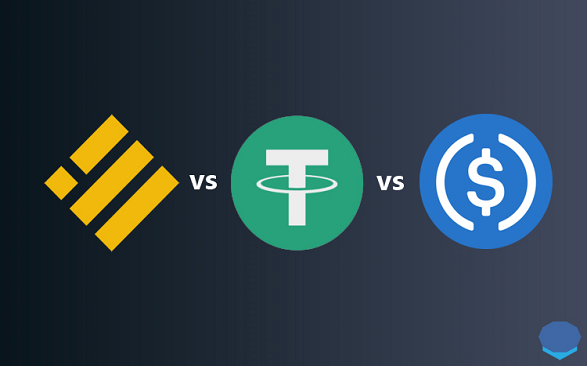Introduction
Cryptocurrencies such as Bitcoin (BTC) and Ethereum (ETH) for example are designed in a manner that they have no stable value. Value is determined by demand and supply, thus prices fluctuate. Crypto traders are constantly buying and selling coins or tokens in the crypto market. So the price of cryptocurrencies are not only always fluctuating but also highly volatile. This makes volatility a major characteristic of cryptocurrencies.
While some see crypto volatility as a reason not to embrace the evolution in finance, some leverage it to make profits. In other words, price fluctuation in the crypto market could either be an opportunity or a crisis depending on the trader or investor stands. Considering the high volatility, keeping profits made from crypto investments or even keeping crypto as a store of value is a matter of concern. How then can you keep your profits in crypto and still prevent them from declining in value as well as move easily from fiat to crypto and vice versa? This is where stablecoins come in. In this article, you will get to understand better what a stablecoin is and how they are pegged. You will also be introduced to the top 3 stablecoins in the market today, helping you appreciate their strengths and their relative risks, real or potential.
What is a stablecoin?
A stablecoin is a type of cryptocurrency that is pegged to a fiat currency, an asset, a combination of both fiat currency and asset, or even to an algorithm, in order to maintain and preserve its price value. Though a stablecoin’s value may be lost due to the depreciation of what it is pegged to, the price value typically remains fixed. In other words, the price of a stablecoin do not typically fluctuate, thus it is not as volatile as other cryptocurrencies.
Cryptocurrencies are of different classifications, such as utility tokens, privacy coins, and others. Based on design, some cryptocurrencies or virtual currencies that have been pegged to a relatively stable currency, or asset, algorithm, or a combination of these experience no significant volatility. This is unlike cryptocurrencies such as bitcoin (BTC) for example, which is unpegged to any currency or asset.
This volatility-resistant category of cryptocurrencies is dubbed ‘stablecoins’. As the name implies, stablecoins are cryptocurrencies or digital assets designed to maintain a fixed value over time while offering other benefits of cryptocurrencies.
To achieve their price stability, stablecoins are usually pegged to a reference asset on a 1:1 ratio. This reference asset could either be a real-world currency such as U.S dollars or a reserve asset such as gold or a cryptocurrency.
Therefore, we have fiat-backed stablecoins such as USDT, USDC, BUSD; cryptocurrency-backed stablecoins such as DAI; and algorithm-based stablecoins such as the collapsed TerraUSD (UST) created by Do Kwon and TerraForm Labs (TFL).
While stablecoins are typically non-interest bearing, they primarily provide an avenue for crypto investors to lock their profits against the unavoidable price fluctuations in the crypto market. Beyond also serving as a dependable store of value, stablecoins have several other merits, including enabling cheaper and faster cross-border money transfers and remittances.
In today’s crypto sphere, there is a growing number of stablecoins. But only a handful are widely adopted and used by crypto proponents. In this article, we will be discussing the top 3 stablecoins by market capitalization: USDT, USDC, and BUSD.
Top 3 Stablecoins by Market Capitalization
-
Tether USD (USDT)
Created in 2014 by a group of early crypto adopters, Tether is a blockchain-based platform with a native stablecoin dubbed USDT. Tether stablecoin (USDT) was primarily designed to enable the use of the fiat currency, USD, digitally.
Being the pioneer stablecoin, USDT has grown to become the biggest stablecoin in the crypto industry by market cap. It is also the most actively traded stablecoin in terms of 24-hour trading volume.
To ensure stability in exchange price, a method to maintain a 1:1 reserve ratio between USDT and its associated real-world asset (USD) was adopted by the founding team. This approach uses the proof-of-reserves concept to prove that USDT tokens issued are fully backed and reserved at all times.
In essence, all USDT tokens are backed 100% by Tether’s reserves and pegged at a 1:1 ratio with the U.S. Dollars (that is, 1 USDT = 1 USD). It is also said that the one-to-one backing implementation is easier for non-technical users to understand as opposed to collateralization techniques or derivative strategies.
According to the Tether company, the issuance or redemption of USDT will not face any market risks such as pricing or liquidity crunches, as reserves are maintained in a one-to-one ratio rather than relying on market forces. Therefore, it is important to know that users can buy or sell as many USDT as they want, quickly, and with low fees.
Above all, USDT is designed such that it can exist on multiple blockchains. So far, USDT exists on many blockchains, including Algorand, Ethereum, EOS, Omin, Solana, and Tron, among others.
USDT is not mined and it is not decentralized. It has a central entity—the company Tether—that issues (mints) and destroys (burns) USDT tokens to adjust the supply of coins to user demand. Tether doesn’t have its own blockchain. Instead, users can transact with USDT on and across some of the bigger blockchain platforms, including:
- Algorand
- Avalanche
- Ethereum
- Polygon
- Solana
- Tron
Tether claims its stablecoins’ value is always 100% backed by assets in its reserve to ensure the one-to-one exchange ratio to the currency (or asset) to which their prices are anchored. According to its latest report, Tether’s reserve contains a diverse mix of cash, cash equivalents (money market funds, U.S. Treasury bills), commercial paper, corporate bonds, loans, and other investments, including digital currencies.
Note that one of the concerns with using USDT is that the transparency and authenticity of the reserve claimed by Tether has been called into question from time to time. This is because every USDT is not solely backed by the fiat, USD, but combines both USD and other assets.
2. USD Coin (USDC)
Also known as digital dollars, USDC is the second largest stablecoin by market capitalization and in terms of the 24-hours trading volume. The stablecoin was launched in September 2018 by Centre, a consortium co-founded by Circle and the top United States exchange, Coinbase. Meanwhile, USDC was first announced by Circle in May 2018.
In just four years of being launched, USDC has grown to be widely accepted. USDC as a stablecoin is considered as adopting the most robust approach for price stability. USDC is designed to address centralization tradeoffs by employing an approach that allows for multiple token-issuing members, multiple reserves, and liquidity sources. This USD Coin design is increasingly believed to be more relatively trusted.
USDC is the first fully fiat-collateralized stablecoin. One digital unit of USDC is completely backed by one unit of reserved fiat or cash (USD). Also, USD Coin is backed by some traditional U.S. financial institutions, including BlackRock and BNY Mellon, so that it’s always redeemable 1:1 for U.S. dollars.
In addition, data reveals that holders of USDC have crossed the 1.5 million mark while the value of USDC in circulation is over $52 billion, with more than 190 countries supporting the stablecoin as a payment method.
Currently, USDC runs on eight blockchains, including Algorand, Avalanche, Ethereum, Flow, Hedera, Solana, Stellar, and TRON. The second largest stablecoin has also been bridged to Arbitrum, Cosmos, Fantom, NEAR, Polygon, and other blockchain networks.
One notable concern with USDC is that some people believe that because the current regulatory environment in the United States is uncertain regarding stablecoin regulations, this may impair the adoption of USDC globally.
3. Binance USD (BUSD)
BUSD is the third largest stablecoin in the cryptocurrency market with its market capitalization rising above $19 billion at the time of writing this article. This fiat-backed stablecoin, BUSD, is powered by Binance, the world’s leading blockchain ecosystem and digital assets exchange. BUSD is issued in partnership with Paxos.
Paxos is a blockchain and crypto company that uses emerging technology to offer stablecoins-as-a-service products to companies. An amount of U.S. dollars equal to the total supply of BUSD is held in custody by Paxos, acting as its reserves in FDIC-insured U.S. banks. While Paxos issues BUSD on the Ethereum blockchain, Binance offers a Binance-peg BUSD token on the BNB Chain.
Similar to Tether (USDT), the Binance Dollars (BUSD) stablecoin is pegged to USD at a 1:1 ratio. The USD-backed stablecoin is fully approved by the New York State Department of Financial Services (NYDFS).
One concern with the adoption of BUSD is its relationship with Binance whose size in the crypto market is so huge that there is risk—real or potential—of monopolistic behavior.
Conclusion
The vital roles played by stablecoins in the crypto industry cannot be overrated as they have proven to be useful tools for traders and investors. While there are numerous stablecoins in the crypto market, it is vital to carefully weigh all options and consider every factor before adopting a particular stablecoin as a savings tool.
In certain circumstances however, there may be a need to adopt two or more of these stablecoins depending on what your goal is or the platform you use. Recently, there have been cases where some stablecoins de-pegged, losing parity with one dollar. Consequently, investors landed in huge losses. As a crypto asset buyer, it is best that you are aware of the risks and the opportunities so you can always make informed decisions.
Credit: Ndianabasi Tom
Discover more from Crypto Asset Buyer
Subscribe to get the latest posts sent to your email.





7 Comments
Comments are closed.